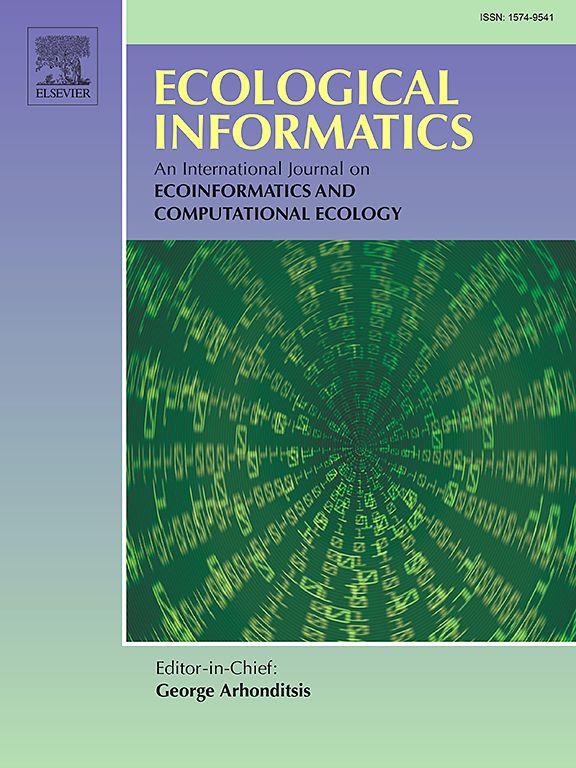Convolutional neural networks and vision transformers for Plankton Classification
IF 5.8
2区 环境科学与生态学
Q1 ECOLOGY
引用次数: 0
Abstract
In this paper, we present a study on plankton classification for automated underwater ecosystems monitoring. The study considers the creation of ensembles combining different Convolutional Neural Network (CNN) models and transformer architectures to understand whether different optimization algorithms can result in more robust and efficient classification across various plankton datasets. Tests involved different variants of the Adam optimizer and multiple learning rate variation strategies applied to several CNN architectures, building an ensemble of classifiers. Such ensembles were tested together with transformer-based models in a detailed comparative analysis considering feature extraction efficiency, computational cost, and robustness to species imbalances. The study highlights the performance of individual nets and ensembles on multiple plankton datasets, and discusses the potential for generalizing this approach to broader aquatic ecosystems. Experiments demonstrate that combining diverse neural network models in a heterogeneous ensemble significantly improves performance with respect to other state-of-the-art approaches across all the problems considered. Final results show that the ensemble-based approach achieves a remarkable accuracy improvement over individual CNN models and over standalone Vision Transformers.
用于浮游生物分类的卷积神经网络和视觉变压器
本文对用于水下生态系统自动监测的浮游生物分类进行了研究。该研究考虑将不同的卷积神经网络(CNN)模型和变压器架构组合在一起,以了解不同的优化算法是否可以在不同的浮游生物数据集上产生更强大和有效的分类。测试涉及不同变体的Adam优化器和应用于多个CNN架构的多种学习率变化策略,构建一个分类器集合。考虑到特征提取效率、计算成本和对物种失衡的鲁棒性,我们将这些集成与基于变压器的模型一起进行了详细的比较分析。该研究强调了单个渔网和鱼群在多个浮游生物数据集上的表现,并讨论了将这种方法推广到更广泛的水生生态系统的潜力。实验表明,在异构集成中结合不同的神经网络模型,相对于其他最先进的方法,在所有考虑的问题上显著提高了性能。最终结果表明,与单个CNN模型和独立视觉变压器相比,基于集成的方法取得了显着的精度提高。
本文章由计算机程序翻译,如有差异,请以英文原文为准。
求助全文
约1分钟内获得全文
求助全文
来源期刊

Ecological Informatics
环境科学-生态学
CiteScore
8.30
自引率
11.80%
发文量
346
审稿时长
46 days
期刊介绍:
The journal Ecological Informatics is devoted to the publication of high quality, peer-reviewed articles on all aspects of computational ecology, data science and biogeography. The scope of the journal takes into account the data-intensive nature of ecology, the growing capacity of information technology to access, harness and leverage complex data as well as the critical need for informing sustainable management in view of global environmental and climate change.
The nature of the journal is interdisciplinary at the crossover between ecology and informatics. It focuses on novel concepts and techniques for image- and genome-based monitoring and interpretation, sensor- and multimedia-based data acquisition, internet-based data archiving and sharing, data assimilation, modelling and prediction of ecological data.
 求助内容:
求助内容: 应助结果提醒方式:
应助结果提醒方式:


